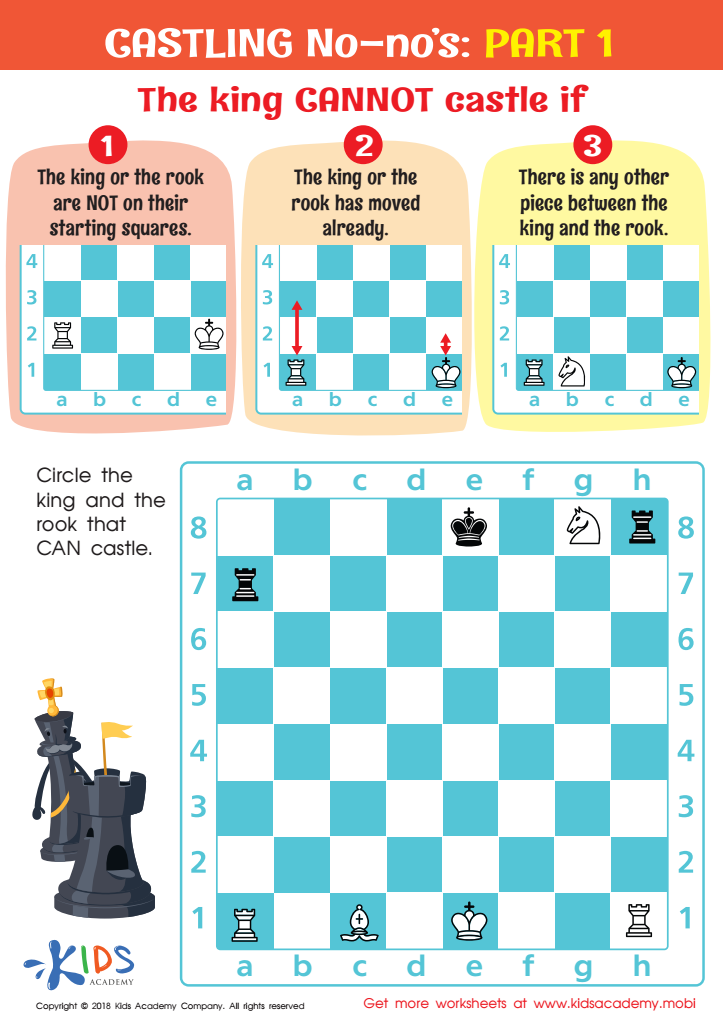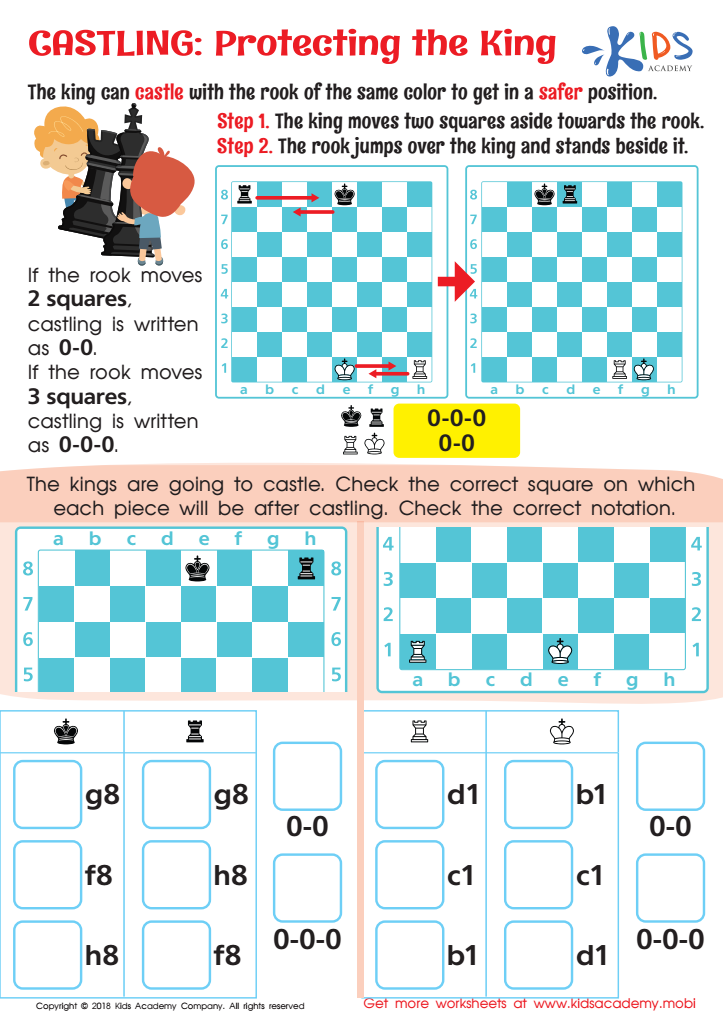Special Moves: Castling - Lesson for Preschool, Chapter - Pieces - How They Move and Capture
In the "Special Moves: Castling" lesson, preschool students will embark on an exciting journey into the world of chess, focusing on one of the most strategic moves in the game: castling. This lesson is a part of the "Pieces - How They Move and Capture" chapter under the "GAME BASICS" unit. Through a series of engaging activities, students will learn not only how to perform the castling move but also understand the important rules and common mistakes associated with it ("Castling No–no's: Part 1 and Part 2 Worksheets"). Additionally, they will explore the defensive benefits of castling, particularly how it serves to protect the king, one of the most crucial aspects of the game ("Castling: Protecting the King Worksheet").
Understanding castling is essential for young learners as it introduces them to strategic thinking and planning ahead. It teaches them the importance of safeguarding their king while simultaneously developing their king's rook. This lesson will nurture their problem-solving skills, attention to detail, and the ability to analyze and react to changing situations. These are invaluable skills that extend beyond the chessboard, fostering critical thinking and decision-making abilities in everyday life.

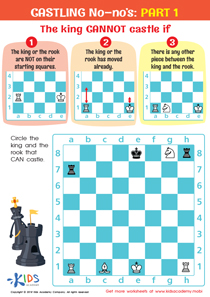
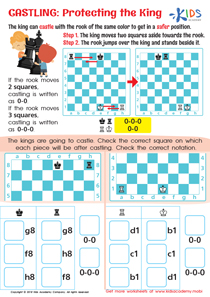
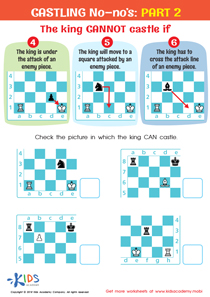
-
Activity 1 / Chess: Special Moves-castling
-
Activity 2 / Castling No–no's: Part 1 Worksheet
Use this worksheet to teach your little ones some of the rules guiding how a king can operate across the chess board. The king cannot castle if the king or the rook is not on their starting squares. The king cannot castle if the king or the rook has moved already. The king cannot castle if there is any other piece between the rook and the king. If your child understands these rules, ask them to circle the king and the rook that can castle in the picture.
-
Activity 3 / Castling: Protecting the King Worksheet
In a game of chess, the king can castle with the rook of the same color in order to get into a safer position. When the rook moves 2 squares, castling is written as 0-0. If the rook moves 3 squares, castling is written as 0-0-0. Now, look at the worksheet with your child. On the first chessboard, the king has moved two squares aside towards the rook. On the second one, the rook has jumped over the king to stand beside it. Let your child use their castling knowledge to answer some of the questions in this easy pdf.
-
Activity 4 / Castling No - no's: Part 2 Worksheet
Before beginning this worksheet, teach your child the following rules. The king cannot castle if the king is under attack of an enemy piece. The king cannot castle if the king will move to a square attacked by an enemy piece. The king cannot castle if the king has to cross the attack line of an enemy piece. With this castling information at hand, your child should be more than ready to play a game of chess. But first, help them complete the exercise by checking the pictures where a king can castle.

